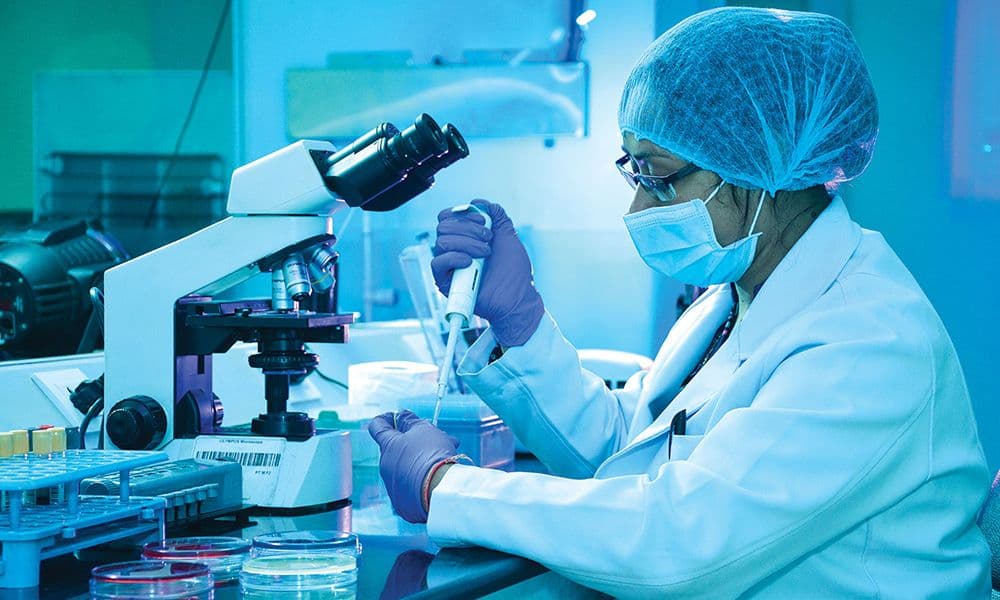Diagnostic radiopharmaceuticals and contrast media play a crucial role in modern medical diagnostics by enhancing the detection and visualization of tissues, organs, bones or blood vessels during medical imaging procedures. These agents help radiologists and clinicians gain valuable functional and anatomical information about the human body that is not visible in conventional medical images. Let’s delve deeper into these diagnostic tools.
Radiopharmaceuticals
Radiopharmaceuticals are radioactive drugs that help perform nuclear medicine imaging tests like PET scans, bone scans, and other functional imaging tests. They contain small amounts of radioactive material called a radionuclide that emits gamma rays or positrons. Some commonly used radiopharmaceuticals include:
– Fluorodeoxyglucose (FDG): Labeled with radioactive fluorine-18, FDG is used as a tracer in PET scans to detect increased glucose metabolism in cancerous tissues and other disorders. It has revolutionized cancer detection and diagnosis.
– Technetium-99m: Attached to compounds that are attracted to specific organs or tissues, technetium-99m is used in bone scans, thyroid scans and other functional imaging exams. It has a short half-life of around 6 hours.
– Thallium-201: Used in myocardial perfusion imaging or stress tests to examine blood flow and viability of heart muscle. It detects areas of reduced blood flow common in coronary artery disease.
– Sestamibi: Labeled with technetium-99m or other isotopes, sestamibi scans examine the parathyroid glands, breasts and heart. It helps diagnose parathyroid tumors, breast cancer and heart conditions.
Mechanism of Action
Diagnostic Radiopharmaceuticals and Contrast Media work by introducing radioactive tracers into the body, usually through intravenous injection. The tracer then travels through the bloodstream and is taken up preferentially by tissues like tumors based on their metabolic activity or molecular composition. Gamma cameras detect the radiation emitted and construct images of the tracer’s distribution in the body on a computer. This helps physicians analyze anatomical or functional processes non-invasively.
Contrast Media
Contrast media, also known as contrast agents, are substances used to improve visualization of internal bodily structures in various imaging techniques like X-rays, CT scans, MRI, and angiography. Some key contrast agents and their applications include:
– Iodine contrast: Used in CT scans and x-rays, iodine-based contrast improves delineation of blood vessels, organs and tumors by making them appear denser than surrounding tissues. Examples include iohexol, ioversol and iopamidol.
– Gadolinium: As a paramagnetic contrast agent, gadolinium improves MRI image contrast. It shortens T1 relaxation time, making inflamed, infected or tumorous tissues appear brighter than surrounding healthy tissues. Gadolinium chelates used include gadopentetate dimeglumine and gadoteridol.
– Barium sulfate: Taken orally or rectally, barium sulfate coats the gastrointestinal tract and appears opaque on X-ray images, enabling visualization of the esophagus, stomach and intestines for diagnoses like cancers, ulcers or hernias.
Mechanism of Action
Diagnostic Radiopharmaceuticals and Contrast Media agents work by altering the local concentration of protons in water molecules, which changes their magnetic resonance characteristics. Iodine attenuates or weakens X-ray beams more than soft tissues like blood, fat and muscles, making vascular structures and organs visible. Gadolinium alters relaxation times of hydrogen protons in tissues, accentuating image contrast for pathology detection.
Safety of Contrast Media
While generally safe for most patients when used as directed, contrast agents may potentially cause mild side effects like nausea or localized pain. Very rarely, serious allergic reactions, nephrotoxicity or nephrogenic systemic fibrosis are possible risks, especially in patients with reduced kidney function or iodine/gadolinium allergies. As such, it is important to weigh risks versus diagnostic benefits and take suitable precautions for high-risk individuals undergoing such procedures. Manufacturers provide product information to guide safe clinical usage.
Advances and New Developments
Research continues to develop newer radiopharmaceuticals and contrast agents with improved safety, higher sensitivity and specificity for disease detection. Biomarker-targeted PET tracers focus on molecular pathology at the cellular level. Nanoparticle contrast lets MRI visualize physiology at the cellular and molecular scale. Optical imaging contrast agents enable image-guided surgeries. Combination of multimodality imaging using PET/CT or PET/MR fusion further enhances clinical utility by offering complementary anatomical and functional information from different modalities together. Artificial intelligence is also being applied to extract more quantitative diagnostic data from medical images.
Diagnostic radiopharmaceuticals and imaging contrast media provide indispensable tools for modern clinical diagnosis and disease management. By improving visualization of internal structures and physiological processes, they significantly aid detection of cancers and other pathologies at earlier, more treatable stages. Continued research will see development of newer targeted agents with better safety profiles and ability to accurately characterize diseases at the molecular level for precision diagnosis and personalized treatment approaches.
*Note:
1. Source: Coherent Market Insights, Public sources, Desk research
2. We have leveraged AI tools to mine information and compile it
About Author – Priya Pandey
Priya Pandey is a dynamic and passionate editor with over three years of expertise in content editing and proofreading. Holding a bachelor’s degree in biotechnology, Priya has a knack for making the content engaging. Her diverse portfolio includes editing documents across different industries, including food and beverages, information and technology, healthcare, chemical and materials, etc. Priya’s meticulous attention to detail and commitment to excellence make her an invaluable asset in the world of content creation and refinement. LinkedIn Profile


